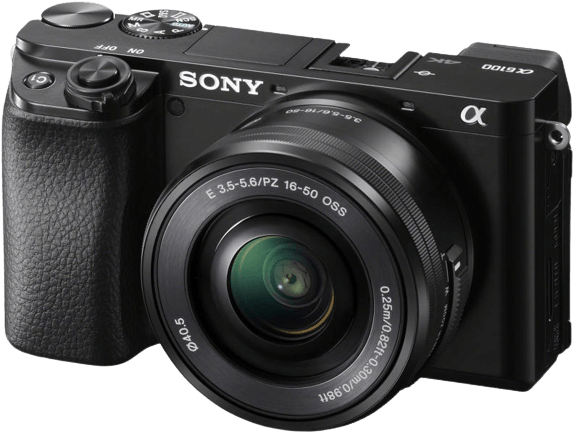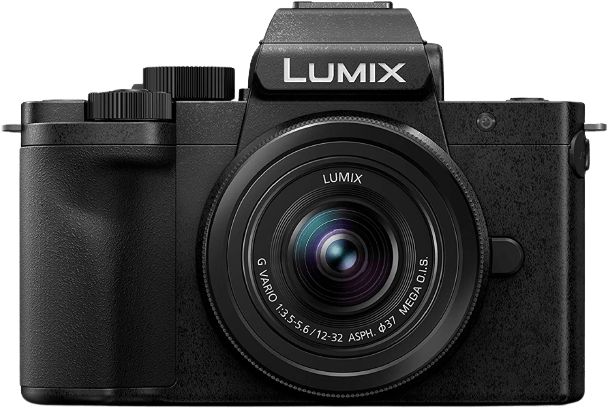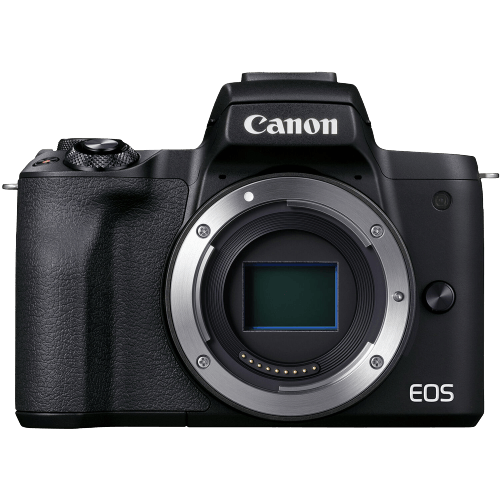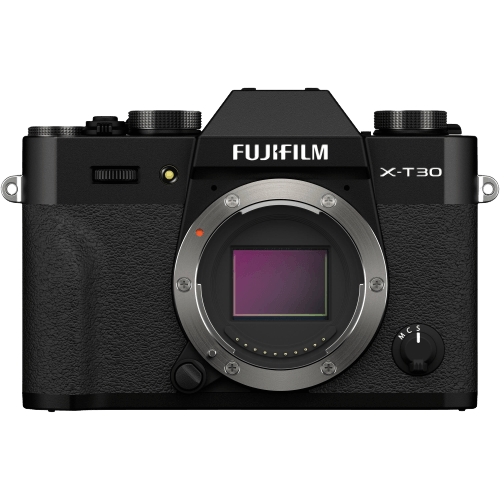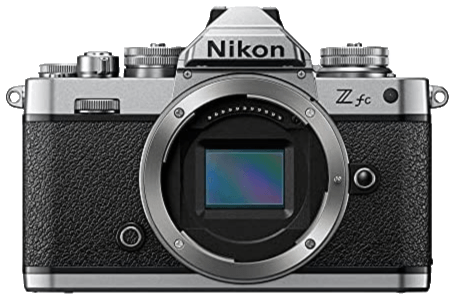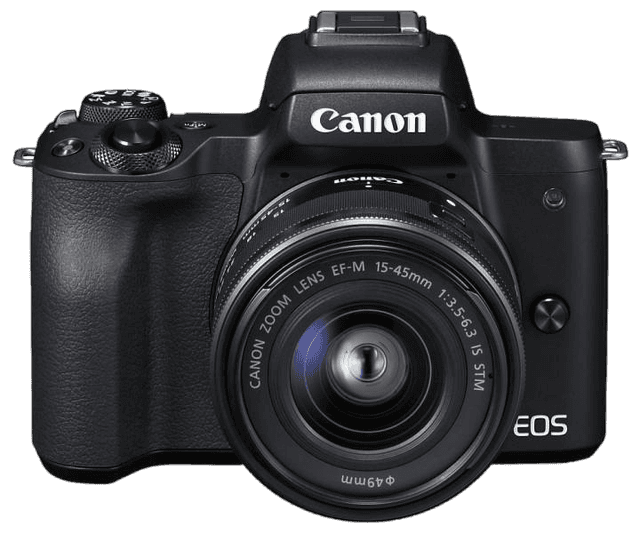One of the most affordable cameras in the list is our top pick. It offers a 20 MP sensor, excellent AF tracking and in-body stabilization. [Note: ExpertPhotography is supported by readers. Product links on ExpertPhotography are referral links. If you use one of these and buy something, we make a little bit of money. Need more info? See how it all works here].
What is the Best Cheap Mirrorless Camera?
We’ve chosen 10 of the best cheap mirrorless cameras on the market today. Before we look at each one in more detail, here is a summary of our recommended models. Now let’s take a look in some more detail at each of the cameras. The Olympus OM-D E-M10 Mark IV crops up in our camera reviews quite often. That’s because it delivers impressive performance at a very attractive price. And it’s a perfect camera to learn the craft of photography. It also helps that it has knockout looks. Its retro style recalls classic SLRs. But its inner workings are full-on modern. The Micro Four Thirds sensor is small compared with, say, APS-C. But most people looking for a cheap mirrorless camera will be more than happy with the results. The sensor is, after all, about twice the size of those found in smartphones. The Olympus OM-D E-M10 Mark IV produces perfectly usable images all the way up to 6,400 ISO. In challenging lighting situations, it has excellent in-body image stabilization. This gives you an extra 4.5 stops of exposure if your subject is not moving. Image quality also depends on lens choice, and the Micro 4/3 lens mount has plenty of options. So you should find one to suit you. Even the kit lens performs pretty well for image sharpness and contrast. So you can get snapping straight away. The Sony a6100 builds on the success of the a6000. And it helped Sony’s reputation as a leading manufacturer of top-quality mirrorless cameras. The autofocus is very fast and accurate. And the camera’s electronic shutter is almost silent in operation. The 24 MP sensor produces excellent quality images and 4K video is available at 30p. You can shoot HD at 120p, giving you a ton of slow-motion possibilities. Maximum ISO is 51,200. It is only at that highest setting that you start to see any intrusive noise. Even then it is more a reduction in detail, not a total loss. This is impressive from an APS-C Sensor. The LED touchscreen is bright and clear. You can navigate menus with it. And you can use it to select AF points and zoom playback images. Other controls are generally well-placed. But the memory card can be tricky to remove. Other things to like about the a6100 are the simple file transfer using NFC and the USB charging. The EVF is good quality for a cheaper mirrorless camera. Overall, this is a sound choice. It will deliver superb quality images and a good user experience. Panasonic has developed a reputation for excellent, reliable cameras. The Panasonic Lumix G100 has a strong set of features that make it a popular choice for vloggers. Indeed they are the biggest target market. The fold-out LCD monitor is one of its attractive features. As is the built-in directional microphone. In fact, there are three microphones. One facing front, one rear, and one omnidirectional. One unusual feature of the G100 is the audio tracking. It takes data from the focus tracking and prioritizes audio from that direction. It can’t compete with a decent external mic. But it is better than most in-camera solutions. As the G100 also has an external mic port, you are covered for most eventualities. The electronic shutter has an impressive maximum speed of 1/16,000. Maximum frames per second in stills mode is a respectable 10. Video capture maxes out at 4K/30p, but this is with cropping. If the sensor-based IS is activated, the crop is even more significant. In fact, you lose more than 3/4 of the image if IS is at its highest setting. It is less pronounced (and more feasible) at 1080p. In general, the image quality of the G100 is good. At higher ISOs, it is less impressive, but the JPEGs are typically usable straight out of the camera. You can edit both JPEG and RAW files in camera. This is useful if you’re away from your computer. The Lumix G100 is an easy-to-use camera that will reliably produce good images. It is a strong contender as a budget mirrorless camera. The Canon EOS M50 Mark II has won many friends for its low-cost, high-quality performance. Like all EF-M mount cameras, the M50 can also accept the extensive inventory of EF and EF-S lenses using Canon’s EOS M-Mount adapter. That is a lot of lenses. And it means there are some pretty cheap lenses available to fill your camera bag. The M50 Mark II has an impressive set of features. The 24 MP APS-C sensor delivers excellent image quality. The DIGIC 8 processor is fast for a camera in this price bracket. You can livestream direct from the camera via Wi-Fi. And portrait orientation for video is now supported. It’s perfect for Instagram Reels. What’s remarkable about the M50 Mark II is how well it does a whole range of things. And all at an impressively low price. You get a large, bright, and responsive touchscreen. You can use this to scroll through menus. It’s very handy for selecting the focus point. It’s especially helpful when your eye is glued to the bright and clear electronic viewfinder (EVF). Autofocus is fast and accurate and even has eye-tracking. This works well with video and stills, and even in fairly poor light. The ultimate test of any camera is the quality of the images it produces. And the EOS M50 Mark II does not disappoint. Both out-of-camera JPEGs and RAW images are excellent. Especially when you consider the cost of the camera. It’s a super entry point into the world of mirrorless cameras. Especially if you consider the range and quality of lenses available. The Canon EOS RP is an impressive entry in this field. That’s partly because it bumps against the definition of “cheapest.” But mainly because of its qualities. For one thing, it’s a full frame camera. It is probably the cheapest full frame camera available. So there are bound to be compromises. There’s no in-body IS for still shooting, for instance. Although Canon’s lens IS performs reliably well. Features you’d often find on full frame cameras, like dual card slots, aren’t on the EOS RP. But that’s because it breaks the “full frame = professional-level” notion. It brings full frame to a wider audience. The EOS RP takes advantage of the benefits of mirrorless design. The AF system covers the whole sensor and is fast and accurate. Unlike DSLRs, mirrorless cameras don’t need a second AF sensor. They can read from the whole sensor. Canon use this to excellent effect with this camera. It is also very compact and light. This can make a difference on a long day of shooting. And Canon has a tried and true formula for ergonomics. Here it is tweaked to include useful features such as AF selection via the touchscreen. The right side of the screen is available for this. And it helps to avoid accidental nose-activation of an AF point. AF tracking also works across the whole image. And those images are the quality you would expect from a Canon full frame camera. Even at 51,200 ISO, you get perfectly usable pictures. Noise only becomes intrusive at the top 102,400. Otherwise, the quality of both JPEG and RAW pictures and video is good. This is an impressive, easily portable camera that opens up the world of full frame photography. And at a low price point! Want to know more? Read our full review. The Panasonic Lumix DMC-G7 is getting a little long in the tooth now. But it still performs well and at an attractive price. It produces reliably good images in both RAW and JPEG formats. And it has impressive features that make it attractive for videographers. These include the touchscreen controls, focus peaking, and zebra displays. All of which are very handy for spotting problems before it’s too late. An external microphone socket is essential if you want your video to have good sound. And the G7 has one. Autofocus and exposure can all be easily adjusted while recording. The touchscreen can also be used for AF point selection whether you are looking through the EVF or using the rear screen. The AF works well and tracks moving subjects very effectively. It can do this at up to six frames per second. The picture quality is very pleasing. And the DMC-G7 is very good at pulling detail from darker areas of photos with a high dynamic range. If you shoot in RAW you can even post process in-camera. This is an attractive camera, especially for budding videographers. It offers a great set of features at a decent price. The Nikon Z5 is on the more expensive side of “cheap.” But we’ve included it here because it is an excellent camera. And it can be had second-hand for about the same as the Canon. Plus, sometimes you need to go that extra mile (or dollar) to get what you want. What you get with the Z5 is excellent image quality from its 24 MP full frame sensor. Not only this but also a generous stable of available lenses. Other noteworthy features are the dual card slots and full frame autofocus. It also has superb EVF and weather sealing. The AF is quick and reliable, but less so in low light. One downside of the EVF is that in poor light, the image is extremely blotchy. Once the camera focuses the EVF improves, but the frame rate slows down. So it becomes inferior to a DSLR. But in that low light, there’s little noticeable noise even up to ISO 25,600. The burst speed of 4.5 fps is a little slow at this price point. On the other hand, the 1/200 second flash sync speed is very handy. This is also true of the microphone and headphone ports. These are essential if you’re going to take video work seriously. If you like your camera to have a little dash of style, the Fujifilm XT-30 II might interest you. Like the Olympus OM-D E-M10 Mark IV, this beauty has metal and leatherette everywhere. I think it looks best with the brushed silver, but the black is also very lovely to look at. And the top plate controls make it look and work like the old-fashioned cameras it pays homage to. This makes it a super camera for learning the basics of exposure, as you can see and adjust the dials. Match it with a lens like the Fujinon XF35mm F2 R WR with its aperture ring, and you have the perfect hands-on learning tool. Because unlike its SLR forebears, you can see in real time what every adjustment does. All this retro-chic is wrapped around some very high tech. The shutter is capable of an astonishing 30 fps. And it has a maximum shutter speed of 1/32,768 s. That is quick by any standard. There are 425 focus points. And the AF is good in most circumstances except for tracking fast-moving objects. So it’s probably not the camera for you if sports is your main thing. But if you shoot portraits, then Fujifilm cameras process JPEGs in a very flattering way. And the X-T30 is no exception. This is a very attractive choice for anyone looking to get into the world of mirrorless camera photography. The Sony ZV-E10 is squarely aimed at the vloggers of this world. It is a compact boxy camera with a very modern look. The stereo microphone array on the top plate can be shielded from wind noise. It uses a neat little “dead cat” which fits in the neighboring hot shoe. There’s no viewfinder, but the touchscreen folds out and rotates up and down. It makes recording yourself a breeze. It’s extremely easy to use as there aren’t many physical controls. This camera is designed to be more point-and-shoot than anything else. Other specifications are strong at this price point. The image quality from the 24 MP APS-C sensor is excellent. The 425 AF points help the ZV-E10 to deliver excellent AF performance across the board. And there is an impressive 11 fps maximum burst speed. High ISO performance is very good. Images are still usable at 51,200 ISO if you’re not going to enlarge them. And they’re excellent up to 6,400 ISO. It’s easy to see why the Sony ZV-E10 is popular with vloggers. It has an excellent sensor and is easy to use. Details like the dead cat and stereo mics add to its appeal for the one-person vlogger. There’s a danger that you will find yourself looking at rather than through the Nikon Z fc. If anything, it is even better looking than the Fujifilm XT-30 II. Perhaps one of the neatest things about the marriage of retro style and new tech is the tiny f-stop window. With beautifully detailed dials on the top plate, you will find a small LCD display. Here is where it gives you the aperture value. It means all exposure information is available on the top plate. It also has other modern tech such as an electronic level and eye and face detection AF. The AF is very fast and effective. Eye tracking works with both video and still photography. High ISO performance is pretty impressive. Images are very useable up to 12,800 ISO. Above that, they deteriorate gradually as you increase the ISO. Image quality overall is very good. The 21 MP sensor delivers crisp photos. It also delivers an impressive 11 fps burst speed. This is a light, compact, and easy-to-use camera that oozes style. And it does it without compromising on quality. Stick a Nikon Z DX 16-50mm f/3.5-6.3 VR lens on it for a complete package. You’ll have a great little camera that won’t disappoint.
Conclusion: The Best Cheap Mirrorless Camera
The Canon EOS M50 is our top pick for the best cheap mirrorless camera in 2023. It offers a satisfying set of features at a very reasonable price. It’s perfect for those who are looking for a camera that is both affordable and powerful. It is a great choice for those who are looking for a budget-friendly mirrorless camera that can still take great photos and videos.




